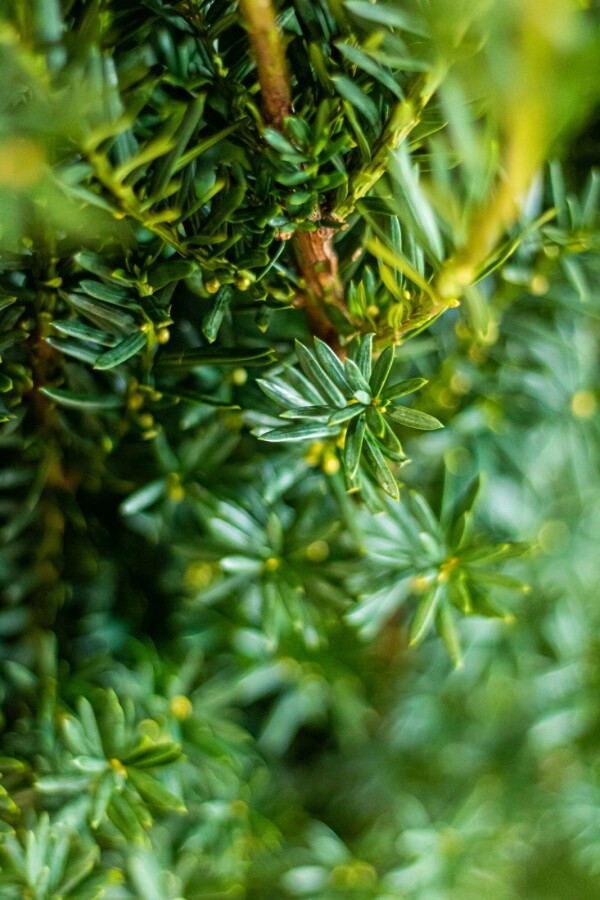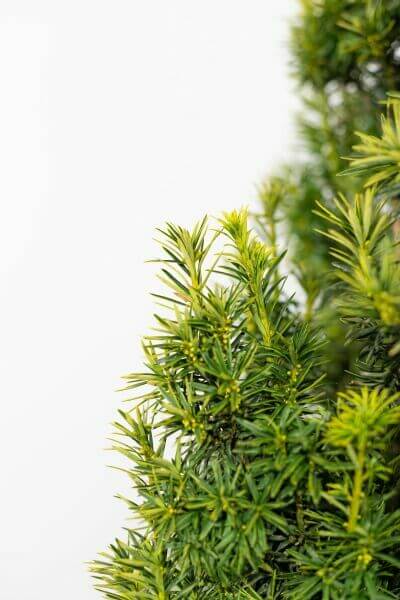Best Hedging Plants For Garden Art
Best Hedging Plants For Garden Art
Blog Article
Hedge Plants For Mixed Plantings
Improve your garden's attraction with rich hedge ranges such as Yew (Taxus), Thuja, Laurel, Photinia, and Bamboo, celebrated for their structural stability and environmental advantages.
Yew and Thuja provide evergreen coverage and winter season resilience, while Laurel uses rapid growth and broad, aromatic leaves.
Photinia adds seasonal appeal with its lively red foliage, and Bamboo lends a low-maintenance, peaceful atmosphere.
These hedges improve air quality, minimize sound, and create tranquil, personal areas.
Proper planting, spacing, and maintenance guarantee energetic development and ecological harmony.
Check out how these lavish ranges can elevate your garden's charm and wellness.
Secret Takeaways
Change Your Garden With Lush Hedge Varieties
- Select Yew for its dense, evergreen growth and unrivaled durability.
- Go with Laurel for its fast growth and broad leaves, guaranteeing quick personal privacy.
- Pick Photinia for its lively seasonal foliage, which turns a striking dark red.
- Utilize Bamboo for a low-maintenance, winter-hardy hedge with aesthetic appeal.
- Space plants 2-3 per meter and prune frequently for optimal development and health.
Popular Hedge Plants
When changing a garden with lavish hedge ranges, it's necessary to consider popular hedge plants such as Yew, Thuja, Laurel, and Photinia due to their distinct attributes and advantages.
Yew (Taxus) is extremely esteemed for its durability and thick, green development, making it a prime option for sustaining landscapes.
Thuja is kept in mind for its evergreen foliage and robust winter strength.
Photinia includes seasonal vibrancy with red leaves that darken with time, developing vibrant visual appeal.
Laurel uses quick development and fragrant, broad leaves, suitable for quick privacy.
In Addition, Bamboo is an excellent option for atmosphere, providing a low-maintenance, winter-hardy choice that enhances the garden's aesthetic with its elegant, swaying walking canes.
These choices accommodate a variety of horticultural requirements and choices.
Benefits of Garden Hedges
Garden hedges offer a multitude of advantages, making them an important addition to any landscape. These natural barriers are affordable to implement and provide substantial wind security, enhancing air flow and contributing to sound decrease. The dense foliage of hedges like Thuja and Beech makes sure personal privacy by obstructing presence, producing a serene and remote environment.
Hedges also play a vital role in microclimate regulation, offering a stable environment that cultivates plant growth and lessens temperature level variations. Their complex leaf structures filter pollutants, enhancing air quality and contributing to a much healthier garden ecosystem.
Furthermore, hedges excel in sound decrease, taking in and deflecting acoustic waves to lower ambient noise levels. This dual performance of offering both acoustic and visual privacy boosts the overall serenity and visual appeal of any garden.
Planting and Maintenance Tips
For an effective hedge, careful preparation of the planting area is vital. Guarantee the soil has correct pH and drainage to support strong root advancement.
Area the plants appropriately for the selected types. Water the hedge frequently during its preliminary growth stage, adjusting as needed with seasonal modifications.
Carry out a systematic insect control and illness avoidance strategy, using chemical or natural treatments when necessary. Routinely check for aphids, termites, and fungal infections.
Apply mulch to retain moisture and suppress weeds. Seasonal pruning promotes dense growth and air flow, necessary for plant health.
Following these standards will assist you cultivate a dynamic, properly maintained hedge that boosts the appeal of your garden.
Spacing and Trimming Guidelines
Spacing and Trimming Guidelines
Proper spacing and trimming are crucial for cultivating healthy, visually appealing hedges. Adequate spacing ensures each plant gets enough nutrients, light, and air flow.
Follow these standards for optimum hedge upkeep:
- Spacing: Position hedge plants 2-3 plants per meter to motivate robust growth.
- Pruning Methods: Regular pruning is important for keeping desired hedge height and shape. Trim brand-new growth in summer and cut back older wood during winter season.
- Seasonal Care: Change cutting approaches and schedules according to seasonal requirements to guarantee plant health.
- Hedge Height: Routinely screen and trim to keep the wanted hedge height and accomplish uniform visual appeals.
Abiding by these steps will guarantee your hedge grows, improving both the appeal and functionality of your garden.
Selecting the Right Hedge
Choosing the Right Hedge
Picking the suitable hedge involves examining elements such as mature height, foliage density, and ecological resilience. Effective hedge plant choice requires comprehending each species' growth attributes and site-specific versatility.
For instance, Yew (Taxus) provides excellent durability and dense development, while Thuja is noteworthy for its winter durability. Additionally, thinking about maintenance requirements is vital; fast-growing species like Laurel or Privet need regular cutting, whereas low-maintenance choices like Bamboo or Ivy may be more suitable for those looking for minimal maintenance.
Environmental elements such as soil type, light availability, and moisture conditions need to also assist the selection procedure. This mindful method ensures the selected hedges will grow, offering both functional and visual benefits to the garden landscape.
Delivery and Planting Suggestions
To ensure your hedge plants prosper, they need to be delivered by specialized couriers and planted without delay upon arrival.
Follow these essential steps for effective planting:
- Soil Preparation: Enrich the soil with organic matter to improve drainage and nutrient material.
- Planting Depth: Develop a trench twice the width and equivalent to the depth of the root ball.
- Watering Techniques: Water thoroughly after planting, keeping the soil regularly damp however not saturated.
- Mulching: Apply a layer of mulch to keep wetness and reduce weeds.
Consumer Support and Service
Given the important function of prompt assistance in horticultural pursuits, our customer support team is readily available six days a week through telephone, e-mail, and social networks to offer expert recommendations and promptly resolve any concerns. Their devotion to quick response times ensures customer complete satisfaction by resolving inquiries associated with plant health, optimum planting methods, and maintenance schedules.

Reaction Time
Telephone
Within 48 hours
Social Media
This thorough support system, reinforced by an outstanding 9.3/ 10 client ranking, highlights our dedication to improving the gardening experience for each customer.
Regularly Asked Concerns
The Length Of Time Does It Take for Hedge Plants to Establish?
Hedge plants generally require one to three years to become fully established, with the exact duration varying by species and growing conditions.
Effective care throughout this critical duration is necessary for robust development. Constant watering, alert weed control, and proper fertilizer application are essential in promoting strong root advancement.
For instance, fast-growing species like Laurel may establish quicker, while slower-growing ranges such as Yew may take longer. Persistent maintenance accelerates the establishment procedure, resulting in healthy and dense hedges.
What Are the very best Hedge Plants for Privacy?
The concern of the very best hedge plants for personal privacy involves evaluating evergreen and deciduous options.
Evergreen hedges like Thuja, Laurel, and Cypress supply year-round protection, guaranteeing continuous privacy.
On the other hand, deciduous hedges such as Beech provide seasonal privacy, shedding leaves in colder months.
Secret Browse around this site maintenance pointers for personal privacy hedges include regular cutting, fertilizing in spring, and appropriate spacing-- typically 2 to 3 plants per meter.
In addition, constant watering and diligent weed elimination are important for promoting healthy, dense development.
Can Hedge Plants Draw In Wildlife to My Garden?
Yes, hedge plants can attract wildlife to your garden by supplying important benefits like shelter, food, and nesting websites, thereby boosting regional biodiversity. Yew, holly, and laurel are excellent for bring in birds, while ivy supports a variety of bugs.
However, it's essential to note that there are some disadvantages, such as increased upkeep to manage bugs and regular maintenance. Thoroughly choosing and keeping hedge varieties can help stabilize these advantages and disadvantages, ultimately cultivating a vibrant and sustainable ecosystem in your garden.
Are There Any Blooming Hedge Plants Available?
Yes, there are flowering hedge plants available that can enhance the charm of your garden.
For instance, Elaeagnus, also called Olive Willow, produces aromatic white flowers in the fall, including a touch of elegance.
Photinia, another popular choice, showcases vibrant red leaves that develop into an abundant green, developing a dynamic visual impact throughout the seasons.
To guarantee these plants grow, it's vital to practice appropriate pruning methods and seasonal upkeep, such as cutting brand-new growth in the summer and cutting back in the winter.
These steps will assist keep the health and visual appeal of your blooming hedges.
How Do I Avoid Insects in My Hedge Plants?
To avoid bugs in hedge plants, employ natural pest control methods and maintain appropriate hedge care. Present useful bugs like ladybugs, which take advantage of harmful pests, to create a balanced community.
Frequently examine your hedges for indications of invasion and without delay eliminate any afflicted parts to avoid the spread. Make sure the health of your hedges by using well balanced fertilizers and supplying appropriate water.
Use mulching to keep soil moisture and appropriate spacing to decrease plant stress and promote robust development. These practices jointly assist in lessening insect problems and maintaining a healthy hedge.
Conclusion
In essence, choosing the ideal hedge ranges such as Yew, Thuja, and Laurel can change any garden into a serene sanctuary. These plants offer year-round greenery, enhance visual appeal, and offer practical benefits like sound reduction and wind defense.
Correct planting strategies, precise spacing, constant watering, and seasonal trimming are crucial for ideal growth.
Trustworthy shipment services and professional customer assistance make sure a smooth experience from purchase to planting, making it simpler than ever to elevate your outdoor space.
Garden hedges offer a multitude of benefits, making them an important addition to any landscape. These natural barriers are economical to implement and provide substantial wind security, enhancing air blood circulation and contributing to sound reduction. The thick foliage of hedges like Thuja and Beech guarantees privacy by blocking visibility, producing a peaceful and remote environment.

Pruning Strategies: Routine pruning is necessary for keeping wanted hedge height and shape. Cut brand-new growth in summertime and cut back older wood during winter season.
Report this page